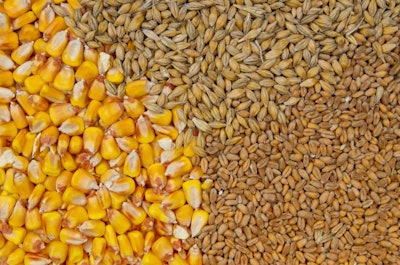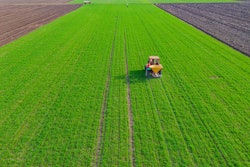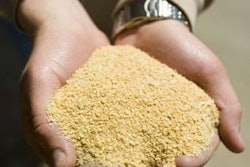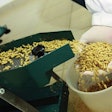
Additional solutions for dealing with the shortage of feed phosphates due to the war in Ukraine
After my previous two blogs where we discussed the shortage of feed phosphates due to the unending war in Ukraine, I received numerous messages regarding some additional solutions. One of them was of particular interest and I thought it would be of interest to a wider audience. It was suggested to combine higher levels of the enzyme phytase with ingredients that contain more phytate-bound phosphorus than what is found in a typical corn-soy diet (about 0.20% in total).
To this end, I decided to look up my trusty French INRA book if only because my USA NRC poultry book is from the previous century, and I needed a quick yet updated reference. For this exercise, I selected three prominent cereals (corn, wheat and barley). Corn, because it is the main energy source in the Americas and many other parts of the world. Wheat, because it is a staple ingredient in Europe – and in short supply these days. Finally, barley because it is used more than it is acknowledged.
I also selected three major plant vegetable protein sources (soybean meal, rapeseed meal and sunflower meal). The first is the main source of proteins for poultry and pigs worldwide, whereas the second is quite important in northern Europe and of course in Canada (canola). Sunflower meal, again, is in short supply due to war in Ukraine – the same situation as with wheat – and needs to be replaced.
| Ingredient/Phosphorus | Total % | Bound % | Phytate % |
| Corn | 0.26 | 75 | 0.20 |
| Wheat | 0.32 | 65 | 0.21 |
| Barley | 0.34 | 55 | 0.19 |
| Soybean meal, 44% | 0.62 | 60 | 0.37 |
| Rapeseed meal, 35% | 1.14 | 60 | 0.68 |
| Sunflower meal, 35% | 1.08 | 85 | 0.92 |
Very quickly, we see that, in the case of cereals, the amount of phytate-bound phosphorus is about 0.20%, and this is what the enzyme phytase must work with. Thus, changing cereals around to increase phytate phosphorus so as to use more phytase to release more phosphorus is not going to lead anywhere. And, we should keep in mind that cereals make up 60% to 70% of the final formula.
In the case of protein sources, we see a great difference between sources. Sunflower meal offers the greatest amount of substrate (phytate phosphorus) for super-dosing phytase. But we must keep in mind that protein sources make up only about 20% of the total formula. So, although on paper rapeseed and sunflower meal look interesting, in reality the difference is not that great.
A diet with 70% cereals (average 0.20% phytate phosphorus) and 20% soybean meal contains 0.21% bound phosphorus. A similar feed with 20% rapeseed or sunflower meal contains 0.28 and 0.32% phytate phosphorus, respectively. Thus, the real difference is about 0.10% bound phosphorus that can be released with decreasing efficiency by increasing doses of phytase. At this point, I believe economics should be considered because the margins appear too “marginal” to me.


















